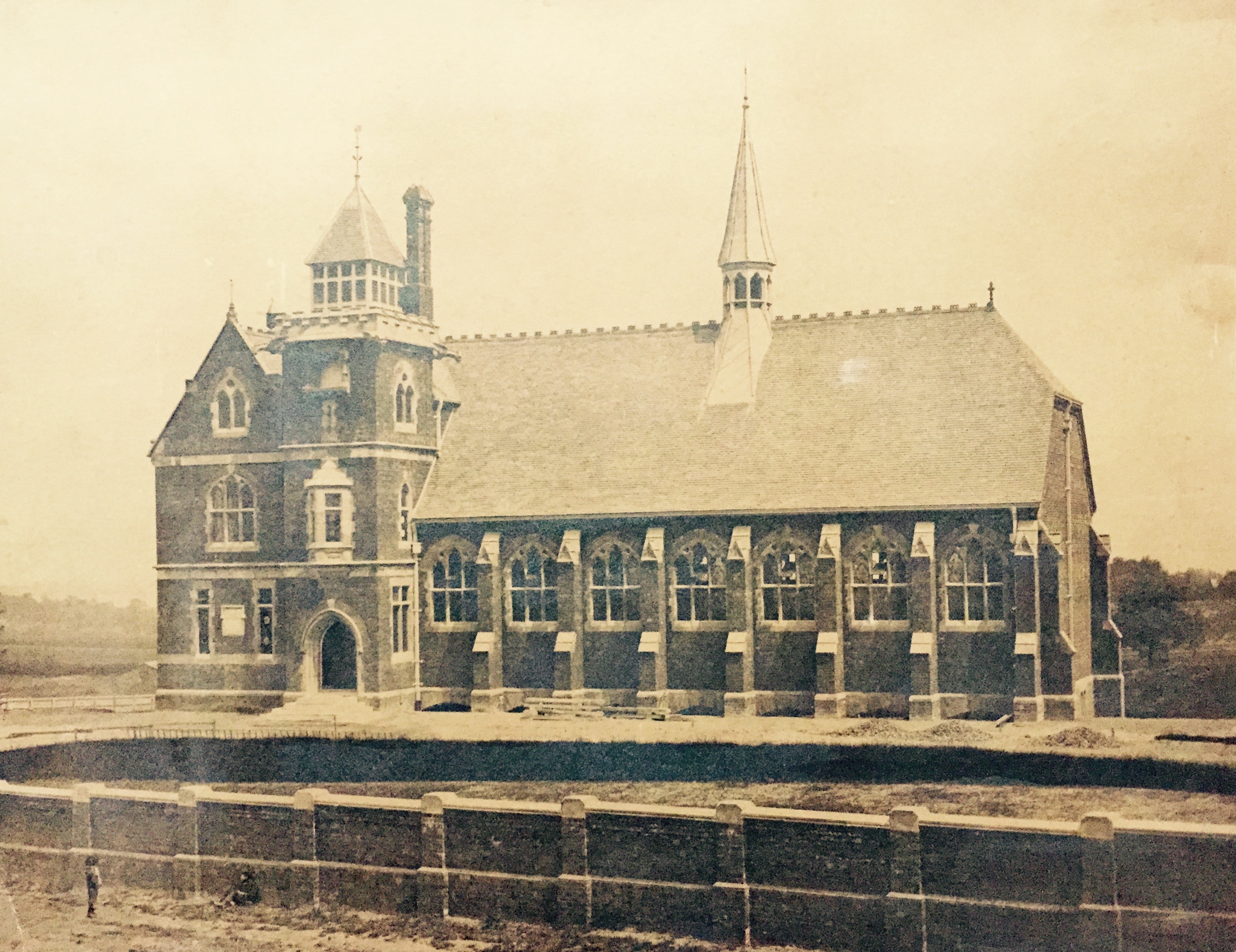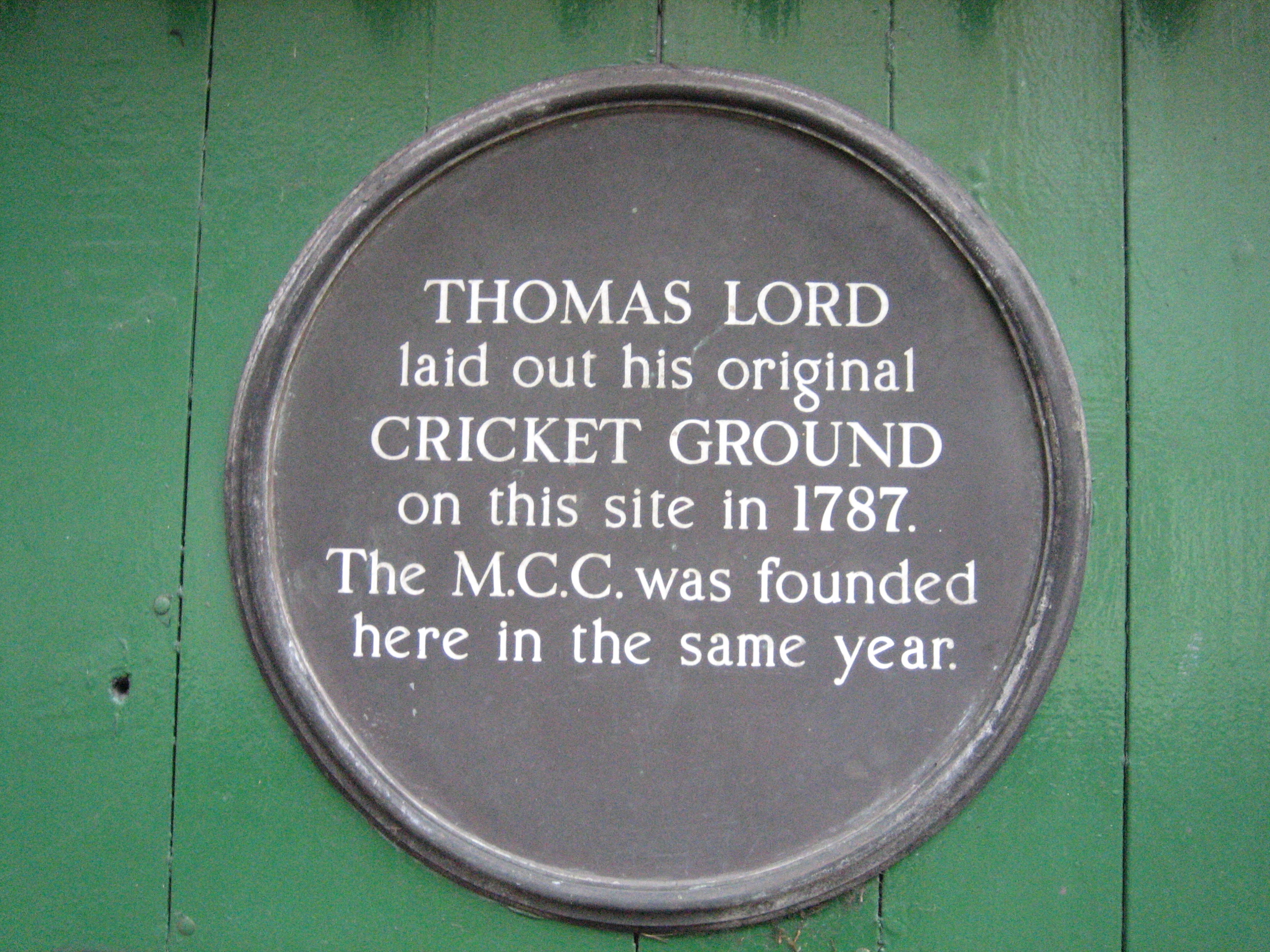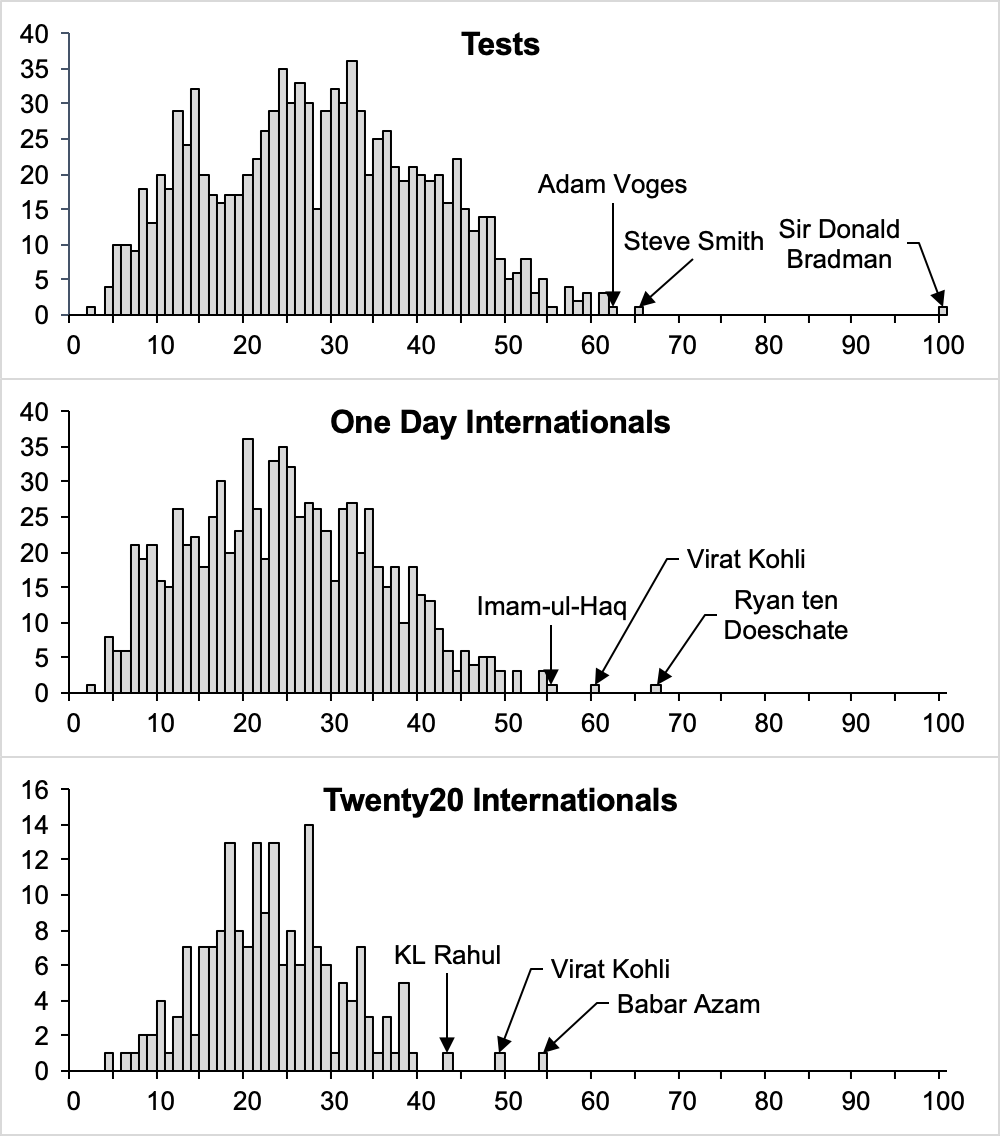|
Freddie Knott
Frederick Hammett Knott (30 October 1891 – 10 February 1972), known as Freddie Knott, was an English amateur cricketer. Knott played for Oxford University Cricket Club and Kent County Cricket Club in the years before the First World War. He played occasionally after the war, including once for Sussex in 1926. Knott was considered one of cricket's brightest schoolboy talents at Tonbridge School but had a more disappointing time at Oxford. He also played varsity rugby union and was a fine all-round sportsman, later becoming a scratch golfer. He served in the British Army in both World Wars and won the Military Cross after being wounded in Macedonia in 1917. Early life Knott was born in Tunbridge Wells, the eldest child of the Reverend Frederick George Knott and his wife Alice. His father was the first Headmaster at Skinners' School in the town. Knott attended Tonbridge School between 1905 and 1910 where he played cricket, captaining the school side in his final year, as well ... [...More Info...] [...Related Items...] OR: [Wikipedia] [Google] [Baidu] |
Tunbridge Wells
Royal Tunbridge Wells is a town in Kent, England, southeast of central London. It lies close to the border with East Sussex on the northern edge of the High Weald, whose sandstone geology is exemplified by the rock formation High Rocks. The town was a spa in the Restoration and a fashionable resort in the mid-1700s under Beau Nash when the Pantiles, and its chalybeate spring, attracted visitors who wished to take the waters. Though its popularity as a spa town waned with the advent of sea bathing, the town still derives much of its income from tourism. The town has a population of around 56,500, and is the administrative centre of Tunbridge Wells Borough and in the parliamentary constituency of Tunbridge Wells. History Iron Age Evidence suggests that Iron Age people farmed the fields and mined the iron-rich rocks in the Tunbridge Wells area, and excavations in 1940 and 1957–61 by James Money at High Rocks uncovered the remains of a defensive hill-fort. It is tho ... [...More Info...] [...Related Items...] OR: [Wikipedia] [Google] [Baidu] |
Skinners' School
The Skinners' School (formally The Skinners' Company's Middle School for Boys and commonly known as Skinners'), is a British Grammar School with academy status for boys located in the town of Royal Tunbridge Wells, Kent, England. Established in 1887, the school was founded by the Worshipful Company of Skinners (one of the 108 livery companies of the City of London) in response to a demand for education in the region. Today Skinners' remains an all-boys grammar school, recently awarded specialist status in science and mathematics in recognition of these disciplines' excellent teaching. The current enrolment is 1119 pupils, of whom around 325 are in the sixth form. The first headmaster was Reverend Frederick Knott, after whom Knott House is named. The current Headmaster is Edward Wesson. Skinners' boys generally take eleven General Certificate of Secondary Education (GCSE) tests in Year Eleven (aged 15–16), and they have a choice of three or four A-levels in the sixth form. An ... [...More Info...] [...Related Items...] OR: [Wikipedia] [Google] [Baidu] |
The Times
''The Times'' is a British daily national newspaper based in London. It began in 1785 under the title ''The Daily Universal Register'', adopting its current name on 1 January 1788. ''The Times'' and its sister paper '' The Sunday Times'' (founded in 1821) are published by Times Newspapers, since 1981 a subsidiary of News UK, in turn wholly owned by News Corp. ''The Times'' and ''The Sunday Times'', which do not share editorial staff, were founded independently and have only had common ownership since 1966. In general, the political position of ''The Times'' is considered to be centre-right. ''The Times'' is the first newspaper to have borne that name, lending it to numerous other papers around the world, such as '' The Times of India'', ''The New York Times'', and more recently, digital-first publications such as TheTimesBlog.com (Since 2017). In countries where these other titles are popular, the newspaper is often referred to as , or as , although the newspaper is of na ... [...More Info...] [...Related Items...] OR: [Wikipedia] [Google] [Baidu] |
Kent County Cricket Club In 1910
Kent County Cricket Club's 1910 season was the 21st season in which the County competed in the County Championship. Kent played 29 first-class cricket matches during the season, losing only five matches overall, and won their third Championship title. They finished well ahead of second place Surrey in the 1910 County Championship. All-rounder Frank Woolley, who was becoming an established international player, was selected as one of Wisden Cricketers of the Year in 1911 after a successful 1910 season. The Championship title was the third of four by Kent in the years before the First World War. It followed their success in 1909. The club's fourth title was won in 1913. Background After decades of underachievement, Kent won their first County Championship in 1906.Kent County Cricket Club Timeline |
First-class Cricket
First-class cricket, along with List A cricket and Twenty20 cricket, is one of the highest-standard forms of cricket. A first-class match is one of three or more days' scheduled duration between two sides of eleven players each and is officially adjudged to be worthy of the status by virtue of the standard of the competing teams. Matches must allow for the teams to play two innings each, although in practice a team might play only one innings or none at all. The etymology of "first-class cricket" is unknown, but it was used loosely before it acquired official status in 1895, following a meeting of leading English clubs. At a meeting of the Imperial Cricket Conference (ICC) in 1947, it was formally defined on a global basis. A significant omission of the ICC ruling was any attempt to define first-class cricket retrospectively. That has left historians, and especially statisticians, with the problem of how to categorise earlier matches, especially those played in Great Britain ... [...More Info...] [...Related Items...] OR: [Wikipedia] [Google] [Baidu] |
Lord's
Lord's Cricket Ground, commonly known as Lord's, is a cricket venue in St John's Wood, London. Named after its founder, Thomas Lord, it is owned by Marylebone Cricket Club (MCC) and is the home of Middlesex County Cricket Club, the England and Wales Cricket Board (ECB), the European Cricket Council (ECC) and, until August 2005, the International Cricket Council (ICC). Lord's is widely referred to as the ''Home of Cricket'' and is home to the world's oldest sporting museum. Lord's today is not on its original site; it is the third of three grounds that Lord established between 1787 and 1814. His first ground, now referred to as Lord's Old Ground, was where Dorset Square now stands. His second ground, Lord's Middle Ground, was used from 1811 to 1813 before being abandoned to make way for the construction through its outfield of the Regent's Canal. The present Lord's ground is about north-west of the site of the Middle Ground. The ground can hold 31,100 spectators, the c ... [...More Info...] [...Related Items...] OR: [Wikipedia] [Google] [Baidu] |
Marylebone Cricket Club
Marylebone Cricket Club (MCC) is a cricket club founded in 1787 and based since 1814 at Lord's Cricket Ground, which it owns, in St John's Wood, London. The club was formerly the governing body of cricket retaining considerable global influence. In 1788, the MCC took responsibility for the laws of cricket, issuing a revised version that year. Changes to these Laws are now determined by the International Cricket Council (ICC), but the copyright is still owned by MCC. When the ICC was established in 1909, it was administered by the secretary of the MCC, and the president of MCC automatically assumed the chairmanship of ICC until 1989. For much of the 20th century, commencing with the 1903–04 tour of Australia and ending with the 1976–77 tour of India, MCC organised international tours on behalf of the England cricket team for playing Test matches. On these tours, the England team played under the auspices of MCC in non-international matches. In 1993, its administrativ ... [...More Info...] [...Related Items...] OR: [Wikipedia] [Google] [Baidu] |
Batting Average (cricket)
In cricket, a player's batting average is the total number of runs they have scored divided by the number of times they have been out, usually given to two decimal places. Since the number of runs a player scores and how often they get out are primarily measures of their own playing ability, and largely independent of their teammates, batting average is a good metric for an individual player's skill as a batter (although the practice of drawing comparisons between players on this basis is not without criticism). The number is also simple to interpret intuitively. If all the batter's innings were completed (i.e. they were out every innings), this is the average number of runs they score per innings. If they did not complete all their innings (i.e. some innings they finished not out), this number is an estimate of the unknown average number of runs they score per innings. Each player normally has several batting averages, with a different figure calculated for each type of matc ... [...More Info...] [...Related Items...] OR: [Wikipedia] [Google] [Baidu] |
Wisden Cricketers' Almanack
''Wisden Cricketers' Almanack'', or simply ''Wisden'', colloquially the Bible of Cricket, is a cricket reference book published annually in the United Kingdom. The description "bible of cricket" was first used in the 1930s by Alec Waugh in a review for the '' London Mercury''. In October 2013, an all-time Test World XI was announced to mark the 150th anniversary of ''Wisden Cricketers' Almanack''. In 1998, an Australian edition of ''Wisden Cricketers' Almanack'' was launched. It ran for eight editions. In 2012, an Indian edition of ''Wisden Cricketers' Almanack'' was launched (dated 2013), entitled ''Wisden India Almanack'', that has been edited by Suresh Menon since its inception. History ''Wisden'' was founded in 1864 by the English cricketer John Wisden (1826–84) as a competitor to Fred Lillywhite's ''The Guide to Cricketers''. Its annual publication has continued uninterrupted to the present day, making it the longest running sports annual in history. The six ... [...More Info...] [...Related Items...] OR: [Wikipedia] [Google] [Baidu] |
Charles Toppin (Cambridge University Cricketer)
Charles Toppin (9 August 1864 – 8 June 1928) was an English cricketer who played 25 first-class matches in the late 19th century. The bulk of these (20) were for Cambridge University, but he also appeared twice each for the Gentlemen and Gentlemen of England, and once for Marylebone Cricket Club (MCC). Charles Toppin was educated at Sedbergh School and St John's College, Cambridge. He made his first-class debut for Cambridge against C. I. Thornton's England XI in May 1885, claiming Thornton's wicket as his first at this level. His best bowling figures came in the Varsity Match against Oxford University at Lord's later that same season, when his first-innings return of 7-51 set up a seven-wicket victory. Toppin appeared for the Gentlemen against the Players at Lord's in 1885 and 1886, while he continued to play for Cambridge until 1887, being selected for both Varsity matches. After a gap of several years, he made one final first-class appearance in 1891 when he played ... [...More Info...] [...Related Items...] OR: [Wikipedia] [Google] [Baidu] |
Wisden
''Wisden Cricketers' Almanack'', or simply ''Wisden'', colloquially the Bible of Cricket, is a cricket reference book published annually in the United Kingdom. The description "bible of cricket" was first used in the 1930s by Alec Waugh in a review for the '' London Mercury''. In October 2013, an all-time Test World XI was announced to mark the 150th anniversary of ''Wisden Cricketers' Almanack''. In 1998, an Australian edition of ''Wisden Cricketers' Almanack'' was launched. It ran for eight editions. In 2012, an Indian edition of ''Wisden Cricketers' Almanack'' was launched (dated 2013), entitled ''Wisden India Almanack'', that has been edited by Suresh Menon since its inception. History ''Wisden'' was founded in 1864 by the English cricketer John Wisden (1826–84) as a competitor to Fred Lillywhite's ''The Guide to Cricketers''. Its annual publication has continued uninterrupted to the present day, making it the longest running sports annual in history. The six ... [...More Info...] [...Related Items...] OR: [Wikipedia] [Google] [Baidu] |
Brasenose College, Oxford
Brasenose College (BNC) is one of the constituent colleges of the University of Oxford in the United Kingdom. It began as Brasenose Hall in the 13th century, before being founded as a college in 1509. The library and chapel were added in the mid-17th century and the new quadrangle in the late 19th and early 20th centuries. For 2020–21, Brasenose placed 4th in the Norrington Table (an unofficial measure of performance in undergraduate degree examinations). In a recent Oxford Barometer Survey, Brasenose's undergraduates registered 98% overall satisfaction. In recent years, around 80% of the UK undergraduate intake have been from state schools. Brasenose is home to one of the oldest rowing clubs in the world, Brasenose College Boat Club. History Foundation The history of Brasenose College, Oxford stretches back to 1509, when the college was founded on the site of Brasenose Hall, a medieval academic hall whose name is first mentioned in 1279. Its name is believed to deri ... [...More Info...] [...Related Items...] OR: [Wikipedia] [Google] [Baidu] |






.jpg)